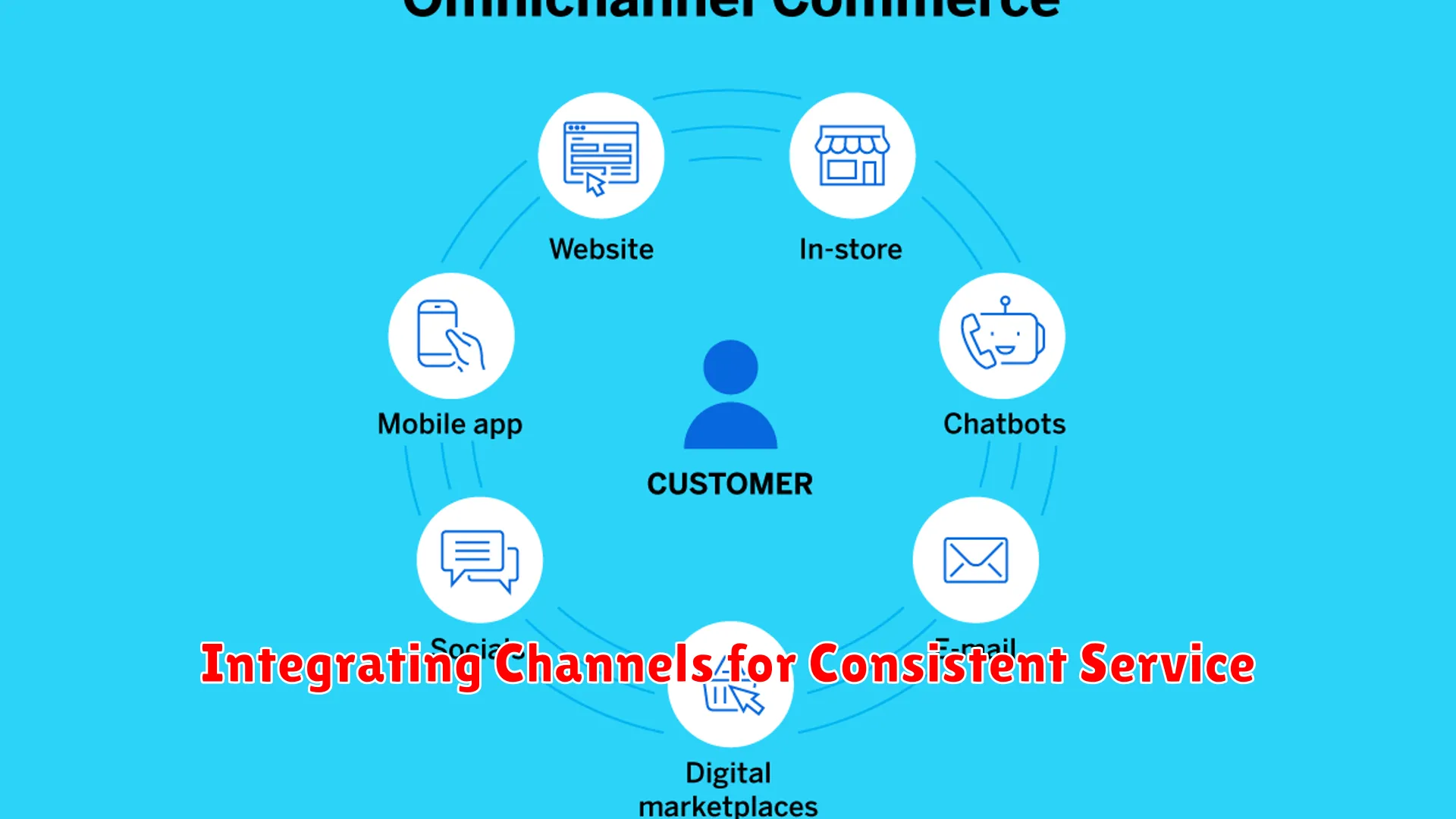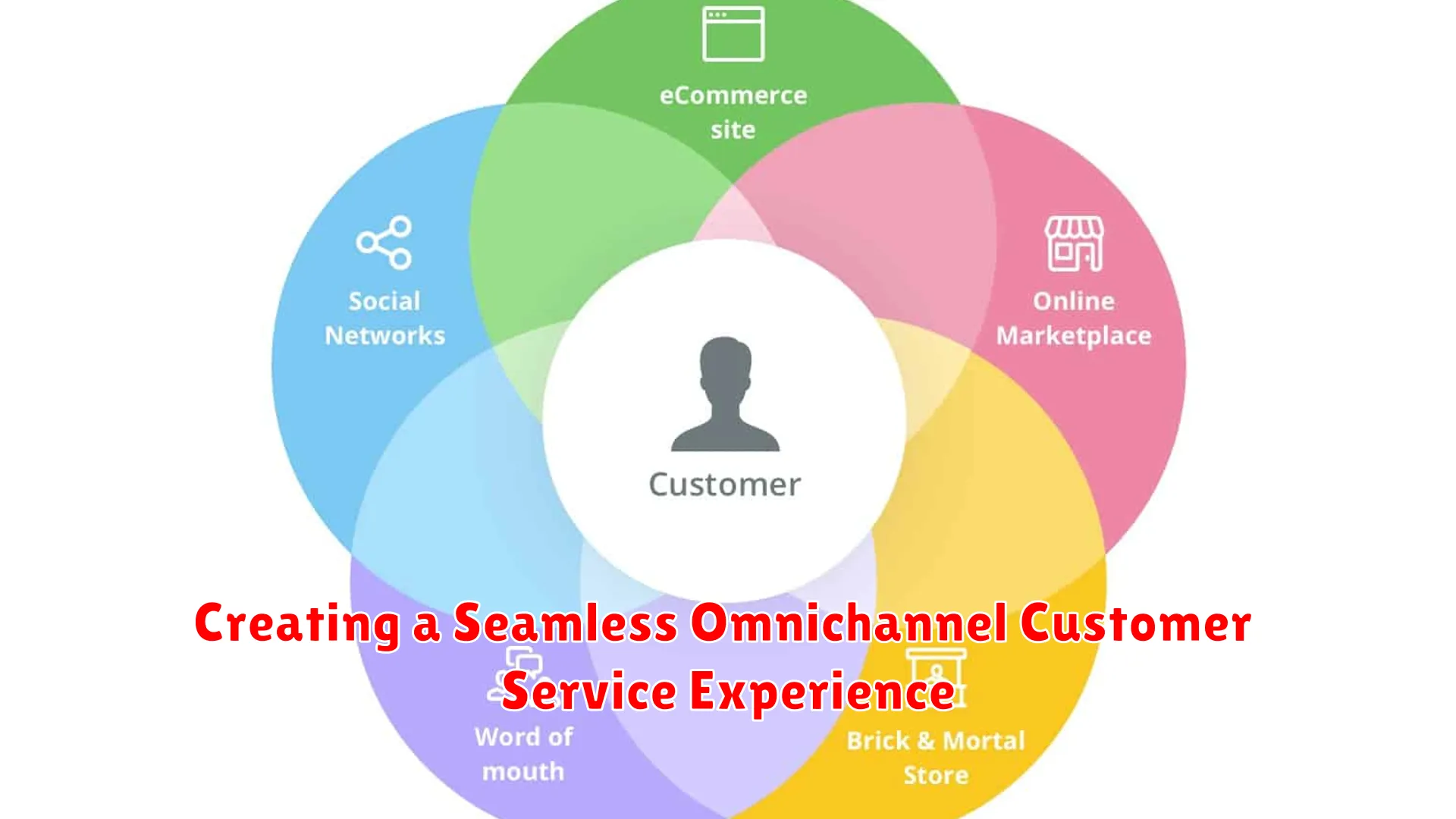In today’s digital landscape, providing a seamless omnichannel customer service experience is paramount. Learn how businesses can leverage technology to unify customer interactions across multiple touchpoints effortlessly.
The Importance of Omnichannel Service

In today’s digital era, providing omnichannel customer service has become crucial for businesses aiming to enhance customer experience and drive loyalty. An omnichannel approach ensures a seamless and consistent service across all touchpoints, whether it’s online, in-store, or through mobile devices.
By integrating various communication channels such as phone, email, social media, and live chat, businesses can cater to customers’ preferences and needs efficiently. This allows customers to switch between channels without any disruption, creating a cohesive experience throughout their journey.
Furthermore, omnichannel service enables businesses to gain valuable insights into customer behavior and preferences. By tracking interactions across different channels, organizations can personalize their services based on individual customer data, leading to increased customer satisfaction and repeat business.
Overall, adopting an omnichannel customer service strategy not only improves operational efficiency but also builds customer trust and loyalty. It demonstrates a commitment to providing a seamless experience that caters to customers’ evolving expectations in a connected world.
Integrating Channels for Consistent Service

Creating a seamless omnichannel customer service experience involves integrating various communication channels to provide consistent support across all touchpoints. By integrating channels such as phone, email, live chat, social media, and self-service portals, businesses can ensure that customers receive a unified and cohesive service experience.
With integrated channels, customers can easily switch between different platforms without having to repeat their concerns. For example, a customer who reaches out via live chat should be able to follow up on the same issue through email or phone without starting the conversation from scratch. This level of seamless transition enhances customer satisfaction and loyalty.
Furthermore, integrating channels allows businesses to gather valuable data and insights on customer interactions. By tracking customer engagement across various touchpoints, companies can gain a comprehensive understanding of customer behavior, preferences, and pain points. This data-driven approach enables businesses to personalize customer interactions and tailor their service offerings to meet individual needs.
Overall, integrating channels for consistent service is essential in today’s digital landscape where customers expect a seamless and personalized experience. By unifying communication channels and leveraging data insights, businesses can build strong customer relationships and drive long-term success.
Training Staff for Omnichannel Support

Training your staff effectively is crucial in ensuring a seamless omnichannel customer service experience. Here are some key strategies to consider:
1. Comprehensive Product Knowledge
Ensure that your staff is well-versed in all products and services offered across various channels. This will enable them to provide accurate information and assistance to customers regardless of the platform.
2. Communication Skills Training
Effective communication is key in omnichannel support. Provide training on active listening, tone of voice, and resolving customer inquiries promptly and politely across channels.
3. Technology Proficiency
Train your staff on the use of omnichannel tools and software to streamline interactions and maintain consistency in customer service delivery. This includes understanding how to switch between channels seamlessly.
4. Role-Playing Exercises
Conduct regular role-playing exercises to simulate different customer scenarios and test your staff’s ability to provide consistent support across channels. This practice helps them adapt to various situations effectively.
5. Continuous Learning and Feedback
Encourage ongoing learning by providing resources, workshops, and feedback sessions to help staff stay updated on evolving customer service trends and improve their omnichannel support skills.
Leveraging Technology for Efficient Service

In today’s competitive business landscape, creating a seamless omnichannel customer service experience is crucial for organizations looking to stay ahead. Leveraging technology plays a key role in enhancing efficiency and effectiveness in managing customer interactions across multiple touchpoints.
By integrating advanced CRM systems, chatbots, and artificial intelligence (AI) into their customer service framework, companies can offer personalized assistance and quick solutions to customer queries. Automated responses and self-service options not only reduce response times but also empower customers to find the information they need independently.
Furthermore, utilizing data analytics enables businesses to understand customer behavior patterns and preferences, allowing them to tailor their services accordingly. By analyzing customer feedback and satisfaction metrics, companies can continuously improve their customer service processes.
Implementing a unified communication platform that integrates various channels such as phone, email, social media, and live chat ensures a seamless experience for customers, regardless of their preferred method of contact. This omni-channel approach enhances customer satisfaction and builds brand loyalty.
Moreover, technology also enables the use of proactive engagement strategies such as personalized recommendations and targeted promotions, enhancing the overall customer experience. Real-time monitoring and response mechanisms help organizations address issues promptly, further solidifying customer relationships.
Analyzing Customer Feedback for Improvement

Customer feedback is a valuable source of information that can help businesses enhance their omnichannel customer service experience. By carefully analyzing feedback from various channels, companies can gain insights into what customers like, dislike, and want from their interactions.
1. Utilizing Feedback Tools: Implementing feedback tools such as surveys, social media monitoring, and customer reviews can provide a comprehensive view of customer sentiments across different touchpoints. These tools can uncover patterns and trends in feedback that can guide improvements in the omnichannel experience.
2. Identifying Pain Points: Analyzing customer feedback allows businesses to pinpoint common pain points or areas of friction in the customer journey. By addressing these pain points, companies can streamline the customer experience and boost overall satisfaction.
3. Personalizing Customer Interactions: Feedback analysis can also reveal preferences and expectations of individual customers. This data can be used to personalize interactions and tailor services to meet the specific needs of each customer, creating a more engaging and satisfying experience.
4. Making Data-Driven Decisions: By incorporating feedback into decision-making processes, businesses can make data-driven improvements to their omnichannel strategies. Customer feedback serves as a roadmap for prioritizing initiatives that have the most significant impact on customer satisfaction.
Overall, analyzing customer feedback is essential for continuously improving the omnichannel customer service experience. By listening to customers and acting on their feedback, businesses can adapt to changing preferences and stay ahead in delivering exceptional service.
Conclusion
In conclusion, delivering a seamless omnichannel customer service experience is vital for modern businesses to meet customer expectations and stay competitive in today’s market.

